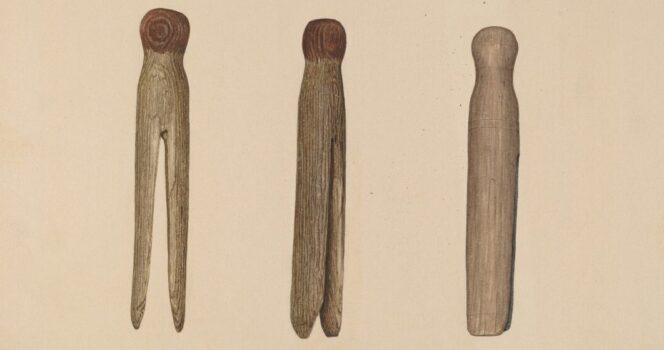The first carved clothespins date back to ancient times and were very different from the wooden clothespins we know today. These early clothespins were usually handcrafted from natural materials such as wood, bone, or even stone, and often featured ornate patterns or designs.
The modern wooden clothespin, as we know it today, appeared in the 19th century to meet the growing need for a practical and efficient tool for hanging out laundry.
The evil of washerwomen and men
The modern design we know today dates back to an 1853 patent for a clothespin filed by David M. Smith of Vermont.
According to his patent, dated October 25, 1853, the updated clothespins “are hinged together” by a wire “so that the two longer legs can be brought together and at the same time spread apart the shorter legs.”
Not your typical “Clothespin” Skin 4, a sculpture on Umeå Arts Campus by Turkish artist Mehmet Ali Uysit, is commonly…
Posted by Umeå University on Thursday, January 25, 2024
The two pieces of wood are shaped to form a clamp when pressed together. This allows the clothespin to securely hold clothes without damaging them. The spring mechanism ensures that the clothespin remains closed when in use, providing a reliable hold on laundry, even in windy conditions.
Smith states in the patent: “Another advantage, also very important, [which] my improved clothes-pin possesses over the ordinary pin, is that it cannot be detached from the clothes by the wind, as is the case with the ordinary pin, which is a serious inconvenience to washerwomen.”
